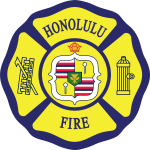Sprinklers
Automatic fire sprinklers detect heat and control the fire. By reducing the heat, flames, and smoke produced in a fire, fire sprinklers save lives providing residents more time to escape.
Sprinkler Ordinances
In 2018, an ordinance was put in place that requires all existing high-rise residential buildings to conduct fire safety evaluations within three years and take steps to pass the evaluations within seven years.
The ordinance was prompted by the fire that raged through the 36-story Marco Polo building in July 2017, killing four people. The building, built in 1971 before the city required high-rise residential buildings to have a sprinkler system, was not equipped with an automatic sprinkler system.
Resources
Here are the resources needed to comply with the law.
Ordinances Relating to Fire Safety
Building & Life Safety Evaluation
This form is for licensed design professionals to use for existing residential high-rise buildings.
List of High-rises
All existing high-rise residential buildings in Honolulu that need to be in compliance with the Ordinance 19-04. Updated January 18, 2024.
Safety Tips
- When installing, use a licensed professional to install sprinklers.
- Inspect, test, and maintain sprinklers per the manufacturer’s recommendations.
- Fire sprinklers are the first line of defense against fires!
- Having fire sprinklers are like having a fire fighter in your home 24/7.
Residential Fire Sprinkler Facts
Fire kills an average of 2,500 people annually in the U.S., which is more than all natural disasters combined. Unfortunately, 80% of all fire deaths are the result of home fires.
- Those at the highest risk are the very young or the elderly.
- Occupants have about three minutes to escape a home fire.
Since 2007, two states require residential fire sprinklers; 18 states allow local jurisdictions to require residential sprinklers; and three states require residential fire sprinklers in townhouses. Fire sprinklers really save lives.
- In 2014, the National Fire Protection Association found that fire deaths were
reduced as much as 83% in sprinklered homes. - From 2006 to 2015, the Honolulu Fire Department found that only 4% of fire deaths occurred in sprinklered buildings. Fire sprinklers really save property!
- A 2014 National Fire Protection Association report found a 69% reduction in property loss when a residential fire sprinkler is installed.
- From 2006 to 2015, the Honolulu Fire Department found that only 4% of property losses occurred in sprinklered buildings.
Common Myths
Sprinklers and their piping are pressure-tested to the same standards as the domestic plumbing system. Unlike faucets and other fixtures, sprinklers remain closed until they are needed, which reduces the wear and tear of daily use on the system. Therefore, the chances of a leaking sprinkler is remote to nonexistent.
Sprinkler systems are designed so the closest sprinkler head to the fire is activated. Scottsdale, Arizona and the U.S. Fire Administration found 76% to 92% of residential fires were controlled by two or fewer sprinkler heads.
Typically, a sprinkler utilizes 13 to 18 gallons of water per minute (gpm) and is activated immediately once a fire is detected, resulting in reduced fire property loss. On the other hand, fire fighting hoses flow at least ten times that of a sprinkler (from 150 gpm to 250 gpm) and is applied several minutes after the fire has grown in intensity.
Newer building factors (large open spaces, lightweight construction, furniture stuffed with combustible material) actually exacerbate fire spread and leads to homes burning quicker than ever before, putting the homeowner and fire fighters at risk.
Partner Resources
Home Fire Sprinkler Coalition
Residential fire sprinkler protection systems information.
NFPA Fire Sprinkler Initiative
Advocacy campaign aimed at increasing the number of homes protected by fire sprinklers.
Inside the Marco Polo Fire
The tragic fire that occurred on July 14, 2017, at the Marco Polo high-rise in Honolulu, resulting in four deaths and the damage or destruction of approximately two hundred units in the building, brought to light the consequences that can occur when a residential high-rise building lacks an automatic fire sprinkler system.
If you have doubts about fighting a fire... Just get out!
Never risk your life to save property! Remember to close the door behind you to help contain the fire. Call 9-1-1 from outside the building.






